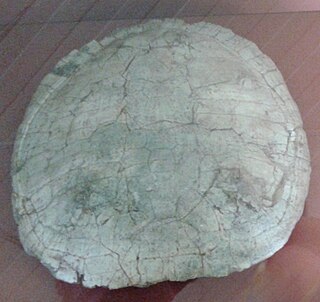
Caenorhabditis elegans is a free-living transparent nematode about 1 mm in length that lives in temperate soil environments. It is the type species of its genus. The name is a blend of the Greek caeno- (recent), rhabditis (rod-like) and Latin elegans (elegant). In 1900, Maupas initially named it Rhabditides elegans. Osche placed it in the subgenus Caenorhabditis in 1952, and in 1955, Dougherty raised Caenorhabditis to the status of genus.

Howard Robert Horvitz ForMemRS NAS AAA&S APS NAM is an American biologist best known for his research on the nematode worm Caenorhabditis elegans, for which he was awarded the 2002 Nobel Prize in Physiology or Medicine, together with Sydney Brenner and John E. Sulston, whose "seminal discoveries concerning the genetic regulation of organ development and programmed cell death" were "important for medical research and have shed new light on the pathogenesis of many diseases".

Sir John Edward Sulston was a British biologist and academic who won the Nobel Prize in Physiology or Medicine for his work on the cell lineage and genome of the worm Caenorhabditis elegans in 2002 with his colleagues Sydney Brenner and Robert Horvitz at the MRC Laboratory of Molecular Biology. He was a leader in human genome research and Chair of the Institute for Science, Ethics and Innovation at the University of Manchester. Sulston was in favour of science in the public interest, such as free public access of scientific information and against the patenting of genes and the privatisation of genetic technologies.

Marchantiales is an order of thallose liverworts that includes species like Marchantia polymorpha, a widespread plant often found beside rivers, and Lunularia cruciata, a common and often troublesome weed in moist, temperate gardens and greenhouses.

Marchantiaceae is a family of liverworts in order Marchantiales. It contains a single genus Marchantia.

The elegant water shrew is a species of mammal in the subfamily Soricinae of the family Soricidae. It is the only species within the genus Nectogale. It lives in Sikkim and China.
A. gracilis may refer to:

Aytoniaceae is a family of liverworts in the order Marchantiales.

Asterella is a liverwort genus in the family Aytoniaceae.
Chaetonotus elegans is a species of gastrotrichs in the genus Chaetonotus. It is found in freshwater of Europe.
Buellia asterella, commonly referred to as the starry breck lichen, is a rare, black and white lichen in the family Caliciaceae. Once found all across the central European grasslands, it was described as new to science in 1974. Today, it is classified by the IUCN Red List as Critically Endangered and only found in select regions in Norway and Germany.
Asterella gracilis is a thallose liverwort in the family Aytoniaceae.

Bauruemys is an extinct genus of turtles in the family Podocnemididae.

Asterella californica is a complex thallic liverwort in the phylum Marchantiophyta. A. californica often grows as colonies of flat rosettes of light green, rigid thalli, with undersides dark wine-red to nearly black. The receptacles are rounded, with four lobes each bearing a single sporangium sheathed by a white tattered skirt. A. californica is dioecious with separate male plants often intermingled with female plants. This species is found throughout California from San Francisco southward to San Diego and Guadalupe Island. Asterella californica is the commonest species of the three species of Asterella occurring in California; the other two species are A. bolanderi and A. palmeri.
Asterella bolanderi is a liverwort in the family Aytoniaceae. It is found in the undergrowth of chaparral habitat and on shady banks. Commonly found within Northern California at elevations lower than 3000 feet, its distribution also ranges along the coast into Southern California. Other members of the Asterella genus include A. californica and A. palmeri.

Asterella drummondii is a liverwort in the family Aytoniaceae, which was first described as Fimbraria drummondii by Taylor in 1846, from material collected by Ronald Gunn in Tasmania, and James Drummond in Western Australia from the Swan River. It is found in all states of Australia, in semi-arid areas.










